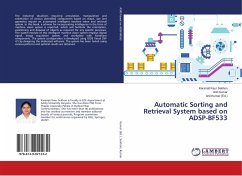
ROBOTIC ARM BASED STORAGE AND RETRIEVAL SYSTEM
ROBOTIC ARM
Versandkostenfrei!
Versandfertig in 6-10 Tagen
29,99 €
inkl. MwSt.

PAYBACK Punkte
15 °P sammeln!
The introduction of robotic Arms in the pharmacy industry represents a significant technological advancement aimed at enhancing efficiency, accuracy, and productivity. These robotic systems feature a robust design made of aluminum and plywood, ensuring durability and strength, with a Cartesian-type structure and securely fastened components. Stability is crucial, and the design withstands vibrations and deformations caused by rapid movements. Key electronic components include the Arduino microcontroller, which processes input signals and controls movements, and servo motors, which allow precis...
The introduction of robotic Arms in the pharmacy industry represents a significant technological advancement aimed at enhancing efficiency, accuracy, and productivity. These robotic systems feature a robust design made of aluminum and plywood, ensuring durability and strength, with a Cartesian-type structure and securely fastened components. Stability is crucial, and the design withstands vibrations and deformations caused by rapid movements. Key electronic components include the Arduino microcontroller, which processes input signals and controls movements, and servo motors, which allow precise control of angular positions using Pulse Width Modulation (PWM) techniques. Additionally, DC gear motors provide the necessary torque and speed for precise movements. In pharmacies, robotic arms automate tasks such as sorting medications, filling prescriptions, and managing inventory, reducing human error and improving efficiency and safety. The integration of Internet of Things (IoT) technology offers future prospects for remote control and real-time monitoring, further enhancing efficiency and accuracy.














